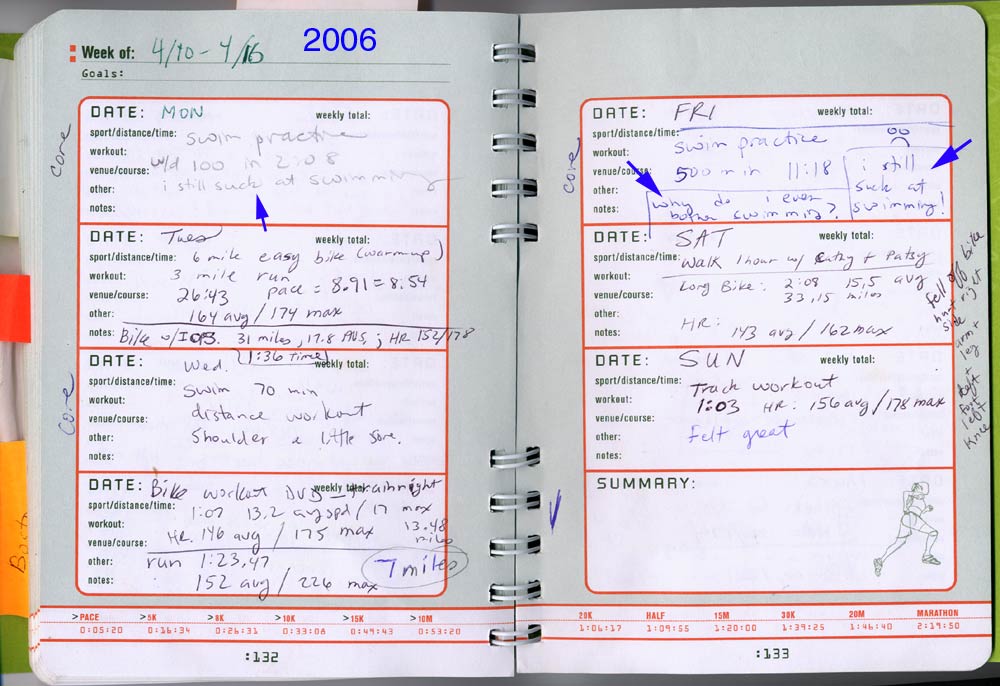If you’re serious about your training, you need to keep a training log. Record every training session and over time, you will be able to observe what patterns lead you to increased strength and fitness, and what results in plateaus and overtraining.
- A record
Even if you’ve got a great memory, keeping your weights and times written down is better. This is important for everyday training, as well as when we test ourselves with benchmarks and rep maxes.
If you don’t keep track of what weights you are using, you run the risk of either sticking at the same weight for too long or making too big of a jump. You want to gradually increase your weights over time, and by writing them down, you know how much you should be loading on your bar each time. For testing purposes, it is important to write down your Fran time, the weights you used and how you did your pull-ups. When that work out comes up again 9 months later, you will be able to determine whether or not you have gotten fitter. If your times aren’t improving, you’re probably going to want to rethink your training!
- To keep yourself honest
By keeping record of all your workouts, you have evidence of skipped training days and half-hearted attempts. Consistency is key when you are looking for results, but when life is busy it’s very easy to fall out of routine. A training log will hold you accountable. Also, people cheat reps and tell me unrealistic maxes all the time. (That 400lb back squat from college does not apply 15 years later.) There is no benefit to lying about your results to a log, so lose the ego and write it as it is.
- A learning tool
Your log will provide evidence of whether your training program is working for you, or whether it’s falling short. If you can consistently see gains, you know you’re doing something right. If you start a new lifting program and by the end of it add 20lb to your clean and jerk and 15lb to your snatch, then there in those pages, you have a blueprint for victory. At the same time, if you are not seeing improvements, the answers as to why will be in your log.
- Motivation
It is pretty damn cool to look back and see how far you have come. It is easy to get hung up on the things you can’t do, but a log is a nice reminder that the weights that once seemed heavy are now your warm up sets.
- Overtraining and injury prevention
A log can help prevent overtraining as hard evidence of what you are doing and how often you are doing it. Going for a bench press 1RM every week? That’s a good way of increasing the probability of a pec tear. Are all your WODs long, strenuous chippers? That’s a sure-fire way to burn yourself out. If you do experience an injury, by looking back through your log you can identify excessive volume or signs of injury and avoid repeating these mistakes in the future.
Now I’ve convinced you that you need to be keeping a log, here is how to do it.
- Buy a sturdy notebook or sign up for Beyond the Whiteboard.
- Date every entry. Bonus points for including bodyweight, as this can be an important variable.
- Track your warm ups and mobility work too.
- Include notes on range of motion and necessary modifications. Write down how the movements feel and comments from your coach.
- For WODs, include your time, the weights you used and how you scaled movements.
- Include how the workout left you feeling- for me, knowing how I felt after I finished my first Annie (on the floor exhausted) compared to how I felt 2 years later (tired, but not ruined) was pretty motivating.
- It is also helpful to include notes on your mental state, sleep and diet. Seeing how these variables influence your training is powerful.











































